When Malcolm in the Middle first aired in 2000, it shattered the norms of network sitcoms. No laugh track. No multi-cam. A handheld camera that moved like a documentary crew on speed. A protagonist who stared straight into the lens with the exhausted wisdom of a war reporter. It was punk rock domesticity — a symphony of chaos led by a genius kid, a militarized mom, and a dad who was one anxiety attack away from becoming a cult leader. It didn’t just tell you the nuclear family was imploding — it handed you a slingshot and said, “Aim for the garage.”
- Release Date
-
2000 – 2005
- Network
-
FOX
- Showrunner
-
Linwood Boomer
- Directors
-
Linwood Boomer
- Writers
-
Linwood Boomer
Now, as talk of a reboot simmers and you’ve already rewatched every season (don’t lie — you cried during the Francis arc), the question becomes: what else scratches that same anarchic itch? These 10 modern shows all channel Malcolm in some essential way — whether through disobedient structure, adolescent POVs, economic absurdism, or families that feel like small, failing democracies. They’re not always sitcoms in the traditional sense, but then again, neither was Malcolm in the Middle.
10
‘Better Things’ (2016)
Pamela Adlon’s Better Things is a portrait of single motherhood so textured and specific it feels like it was scraped off someone’s real kitchen table. As Sam Fox, Adlon plays a working actress and ex-child star raising three daughters — the hyper-verbal and often brutal Max (Anora’s Mikey Madison is spectacularly annoying), the quietly enigmatic Frankie (Hannah Alligood), and the baby of the house, Duke (Olivia Edward), whose sensitivity feels like a protest in a world built for cynics. The brilliance of the show is in its refusal to over-explain; scenes unravel with the rhythm of overheard life, letting the beauty and absurdity of womanhood emerge without needing a thesis statement. It’s messy, funny, and searingly intimate — a rare feat of tonal control anchored by Adlon’s fearless central performance.
The Maternal Meltdown as Art Form
Where Malcolm in the Middle turned domestic warfare into slapstick opera, Better Things swaps the cymbals for cellos — but the discord is still symphonic. Like Lois, Sam is constantly on the verge of a breakdown, but she fights with affect instead of volume, and her control is always just one request away from vanishing. Both shows understand family as performance: the audience may change, but the chaos stays on script. The handheld camerawork and nonlinear editing give Better Things a kind of elliptical realism that mirrors Malcolm’s single-camera verité style — it just swaps battle scars for emotional scar tissue.
9
‘Everything Sucks!’ (2018)
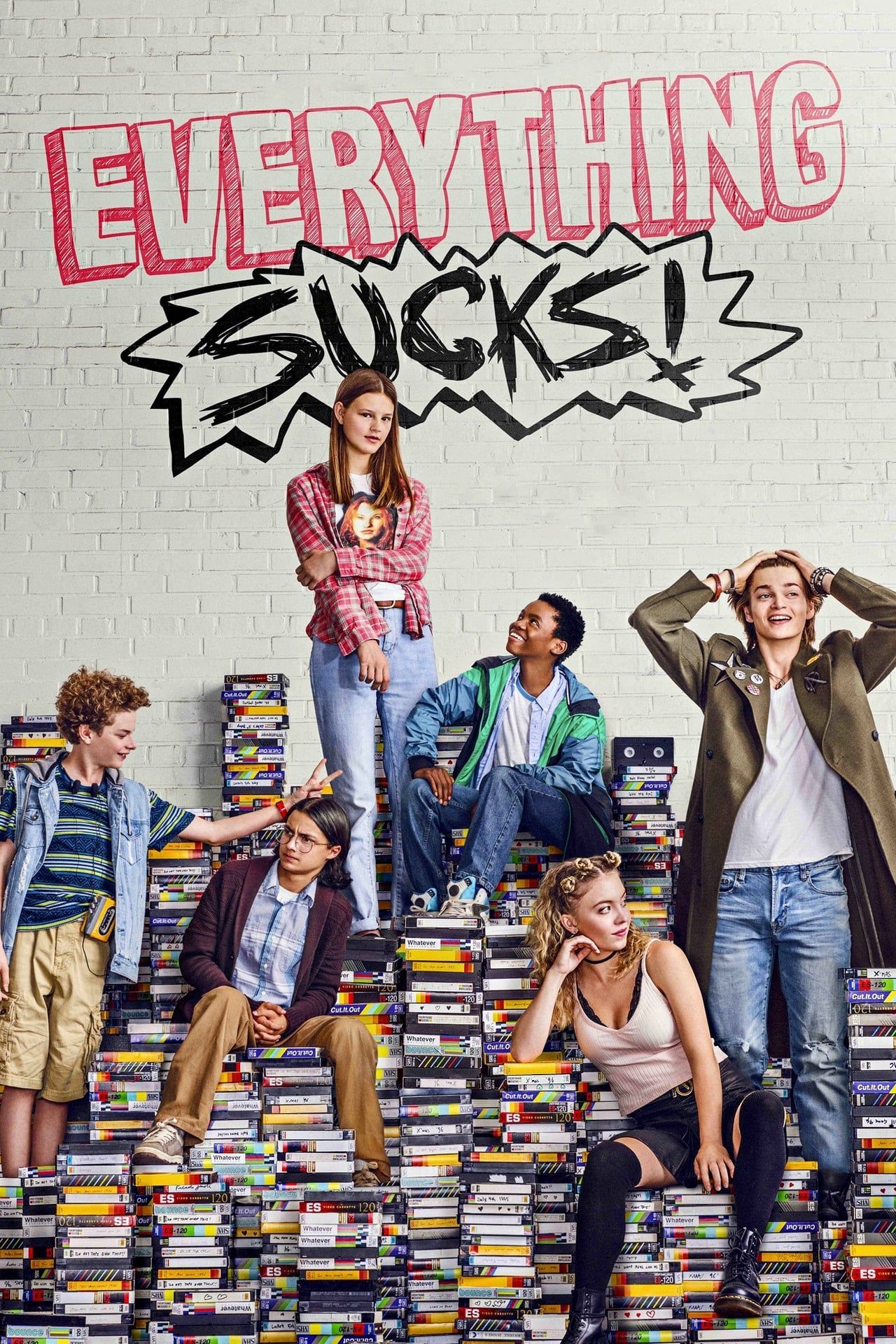
- Release Date
-
2018 – 2017
- Directors
-
Michael Mohan, Ry Russo-Young
- Writers
-
Ben York Jones, Michael Mohan
-
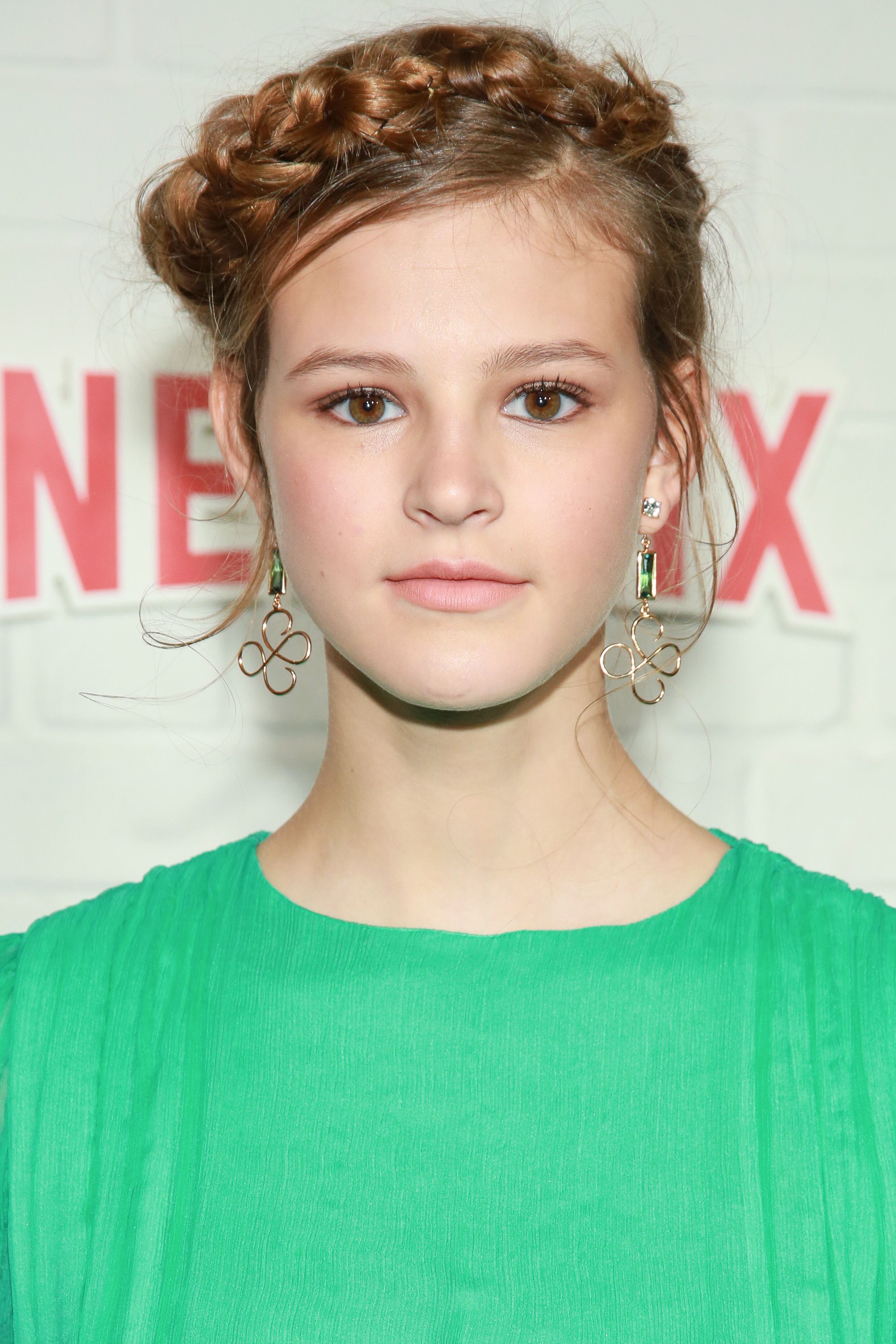
Peyton Kennedy
Kate Messner
-

Jahi Di’Allo Winston
Luke O’Neil
-

Quinn Liebling
Tyler Bowen
-

A tragically short-lived gem, Everything Sucks! takes place in 1996 Boring, Oregon (yes, that’s the name), and follows AV club nerd Luke O’Neil (Jahi Di’Allo Winston) and drama club outsider Kate Messner (Peyton Kennedy) as they awkwardly navigate friendship, sexuality, and an ill-advised attempt to co-direct a student film. The ensemble is charmingly cast, but the real scene-stealer is Sydney Sweeney as Emaline Addario — a chaotic theater kid whose emotional volatility feels both hilarious and painfully real. Sweeney, in what now reads as a proto-Euphoria role, captures the hormonal tightrope walk of adolescence so perfectly that even her breakdowns feel like performance art. The show’s aesthetic — camcorder filters, grunge tracks, and analog imperfections — adds a tactile texture to its coming-of-age heart.
Malcolm’s Gen Z Spirit Animal in a Nirvana Hoodie
Where Malcolm cracked open the chaos of a working-class household, Everything Sucks! cracks open the inner lives of kids still learning how to perform themselves. Luke’s fourth-wall-breaking voiceovers and failed romantic overtures recall Malcolm’s own attempts to intellectualize puberty — both protagonists are emotionally precocious and chronically misread. The show’s combination of confessional monologues and lo-fi visuals mirror Malcolm’s documentary impulse, capturing adolescence not as a rite of passage but as a series of badly lit, emotionally overheated auditions. It’s less about growing up than about deciding who gets to direct your life.
8
‘Reservation Dogs’ (2021)
Sterlin Harjo and Taika Waititi’s Reservation Dogs is an ensemble-driven masterclass in tonal balance, anchored by a cast of relative newcomers who deliver performances so lived-in they feel autobiographical. D’Pharaoh Woon-A-Tai’s Bear is the show’s brooding pseudo-leader, while Devery Jacobs’ Elora carries a grief-soaked steeliness that never turns sentimental. Lane Factor’s deadpan Cheese and Paulina Alexis’ scene-stealing Willie Jack round out a quartet that moves like real teens — aimless, hilarious, and stitched together by shared trauma and secret tenderness. Set in rural Oklahoma on an Indigenous reservation, the show blends magical realism, slapstick comedy, and generational ghost stories with an ease that feels effortless and earned.
Anarchy with Heart — and a Heist Plan
Like Malcolm, Reservation Dogs is about teens whose intelligence is both a blessing and a burden — Bear and Malcolm could form a support group for kids whose parents love them but are functionally unavailable. Both shows revel in the absurdity of adolescence under pressure: in Malcolm, it’s economic precarity and suburban entropy; in Reservation Dogs, it’s cultural erasure and generational grief. The single-camera style and fourth-wall-adjacent moments (including conversations with spirits) give Reservation Dogs the same surreal charge as Malcolm, but with a layer of ancestral weight. It’s a comedy about survival — not just of people, but of personality.
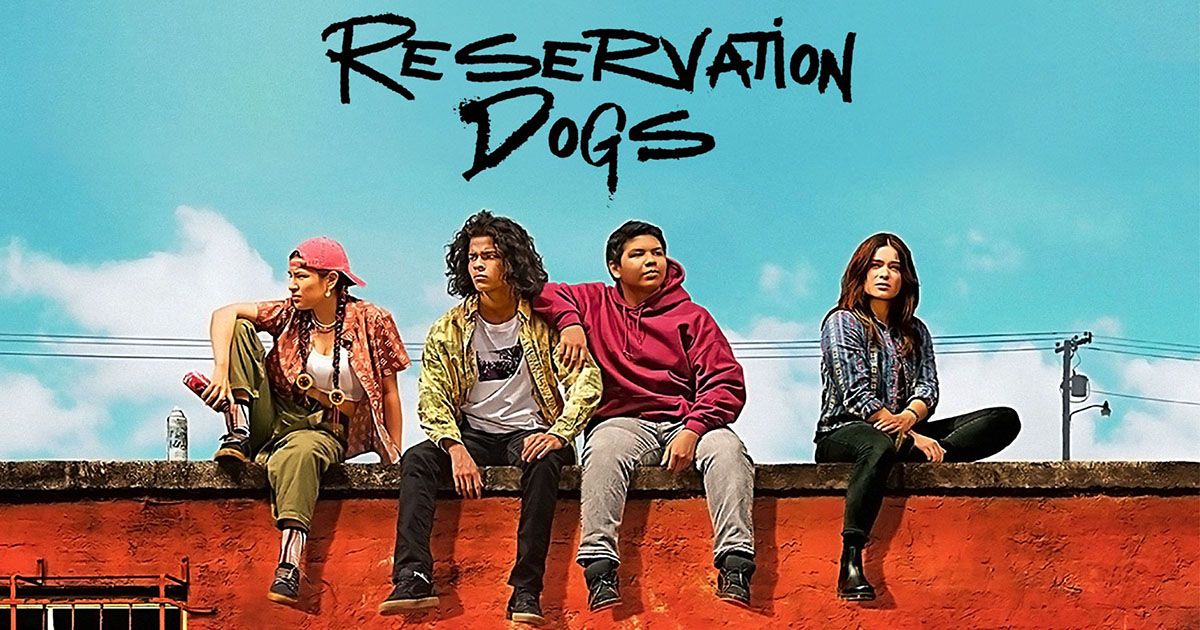
Related
Reservation Dogs: 10 Reasons to Check Out This Hilarious Native American Comedy TV Series
Reservation Dogs is a groundbreaking comedy that challenges stereotypes and showcases Indigenous talent.
7
‘Life in Pieces’ (2015)
Life in Pieces is a network comedy that somehow slipped through the cracks, quietly experimenting with structure while disguising itself as a traditional family sitcom. The show follows the Short family — three generations of neurotic Californians — and each episode is broken into four short vignettes, offering a Rashomon-lite cross-section of suburban dysfunction. The cast is stacked: Thomas Sadoski as the sardonic middle child; Betsy Brandt as a high-functioning chaos mom; Zoe Lister-Jones as the world’s most hilariously anxious wife; and Colin Hanks, playing, well, a slightly more self-aware version of Colin Hanks. What makes it great is its precision — jokes are tightly coiled and performances calibrated to hit a different emotional register with each vignette. It’s a magic trick: a show about fragmentation that still feels like one coherent, lovable mess.
Four Rooms, Same House
Where Malcolm in the Middle pulled us through a single family’s daily meltdown, Life in Pieces fractures the domestic chaos into bite-sized windows, offering something just as dysfunctional but with more breathing room — and, arguably, more range. Both shows share a fascination with the logistics of love: how hard it is to raise kids, how weird it is to be one, and how everyone is simultaneously the problem and the solution in a household built on compromise and caffeine. Life in Pieces may not break the fourth wall, but it does something subtler — it lets each character construct their own reality, then forces them to reconcile those stories over dinner. It’s a less punk rock format than Malcolm, but the emotional ricochets land just as hard.
6
‘Schitt’s Creek’ (2015)
At first glance, Schitt’s Creek seems like the opposite of Malcolm in the Middle — rich people problems, small-town setting, Canadian niceness — but its greatness lies in the way it disarms those expectations. Created by Eugene and Dan Levy, the show begins with the wealthy Rose family losing everything and relocating to a rural motel in a town they once bought as a joke. Catherine O’Hara’s Moira is a baroque marvel of vocal modulation and delusion, while Annie Murphy’s Alexis turns what could have been a Paris Hilton parody into a devastatingly funny arc of growth. And Dan Levy’s David — emotionally blocked, hyper-verbal, and allergic to sincerity — is perhaps one of the best sitcom characters of the past decade. The show is relentlessly kind without ever sacrificing its bite, and its slow-burn emotional payoffs feel hard-earned rather than engineered.
From Class Clowns to Class Collapse
Malcolm in the Middle and Schitt’s Creek are both stories about families that implode in real time, but while the former revels in entropy, the latter thrives on reconstruction. What links them is tone: both shows understand that chaos is a kind of intimacy, and that humor often emerges from the places we least want to look. David and Alexis are, in a sense, Malcolm and Reese in designer clothing — emotionally reactive, wildly different in affect, but secretly desperate for connection. And Moira, with her operatic avoidance of reality, would get along just fine with Hal and Lois in the aftermath of a PTA meeting gone wrong. Both families are disaster zones, but only because they care too much, and say it too weirdly.
5
‘Pen15’ (2019)
Pen15 is an act of generational time travel — a surreal, hilarious, and sometimes gutting look at middle school in the early 2000s. Created by and starring Maya Erskine and Anna Konkle, the show casts the thirty-something creators as their 13-year-old selves, surrounded by actual child actors, creating a visual and emotional uncanny valley that perfectly captures the absurdity of adolescence. Maya’s manic unpredictability and Anna’s desperate need for approval form the backbone of the series, and both actors perform with such sincerity that the comedy often curdles into something darker and more resonant. Every Lisa Frank sticker, every AIM away message, every failed attempt at coolness feels like a time capsule of hormonal tragedy. It’s cringey, yes — but also cathartic, especially for anyone who came of age in the shadow of Abercrombie.
The Emotional Terror of Being a Smart Kid in a Dumb World
If Malcolm in the Middle gave us the existential dread of childhood as filtered through a gifted program, Pen15 brings us the raw panic of trying to survive junior high without any tools except AIM and deeply inappropriate fashion choices. Both shows center characters who are too emotionally intelligent for their age but still helpless to navigate their lives — Malcolm with his IQ, Anna and Maya with their self-awareness. The chaos is different in scale but not in kind: Pen15 swaps parental neglect for tween betrayal, science fairs for slam books, but the pain of being too aware and too powerless remains the same. What makes Pen15 so Malcolm-like is not just its tone, but its moral: that growing up is never clean, and rarely fair — but if you’re lucky, it’s at least funny.
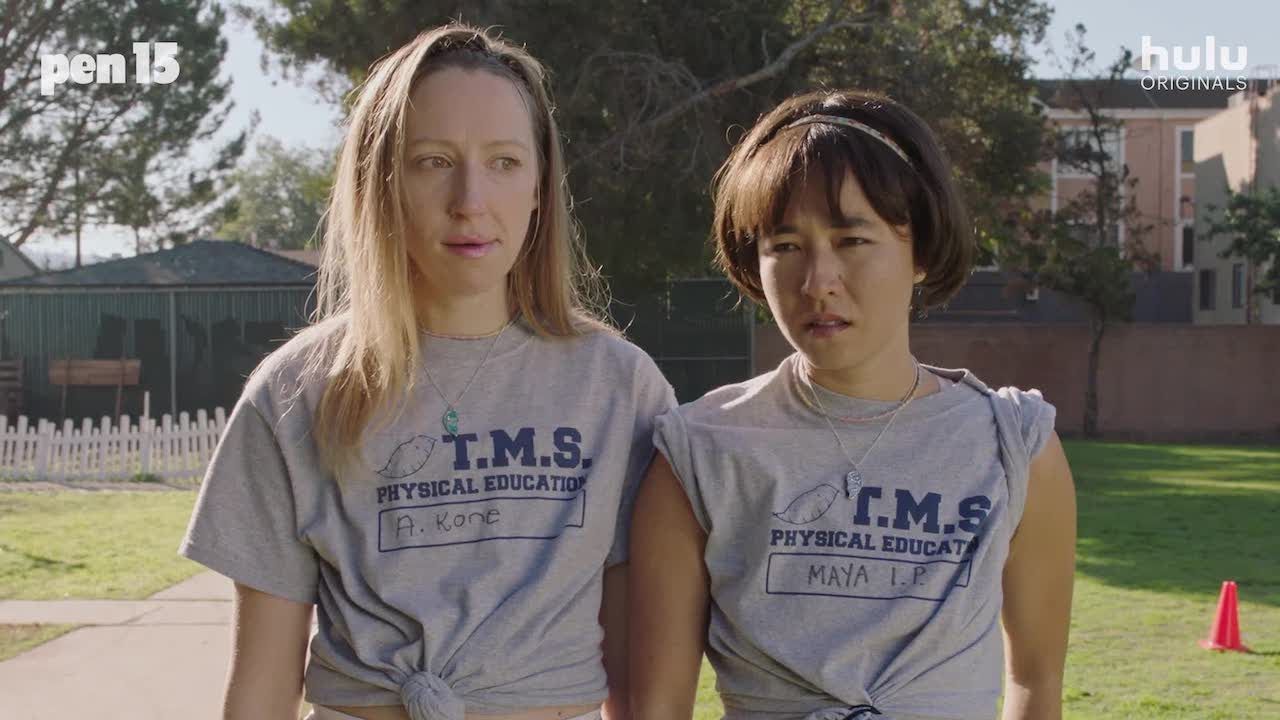
Related
PEN15 Stars Discuss Why the Series Ended After Two Seasons
PEN15 has been a big hit on Hulu, so it was a surprise that the show was cancelled, but for the stars it was not unexpected.
4
‘The Mick’ (2017)
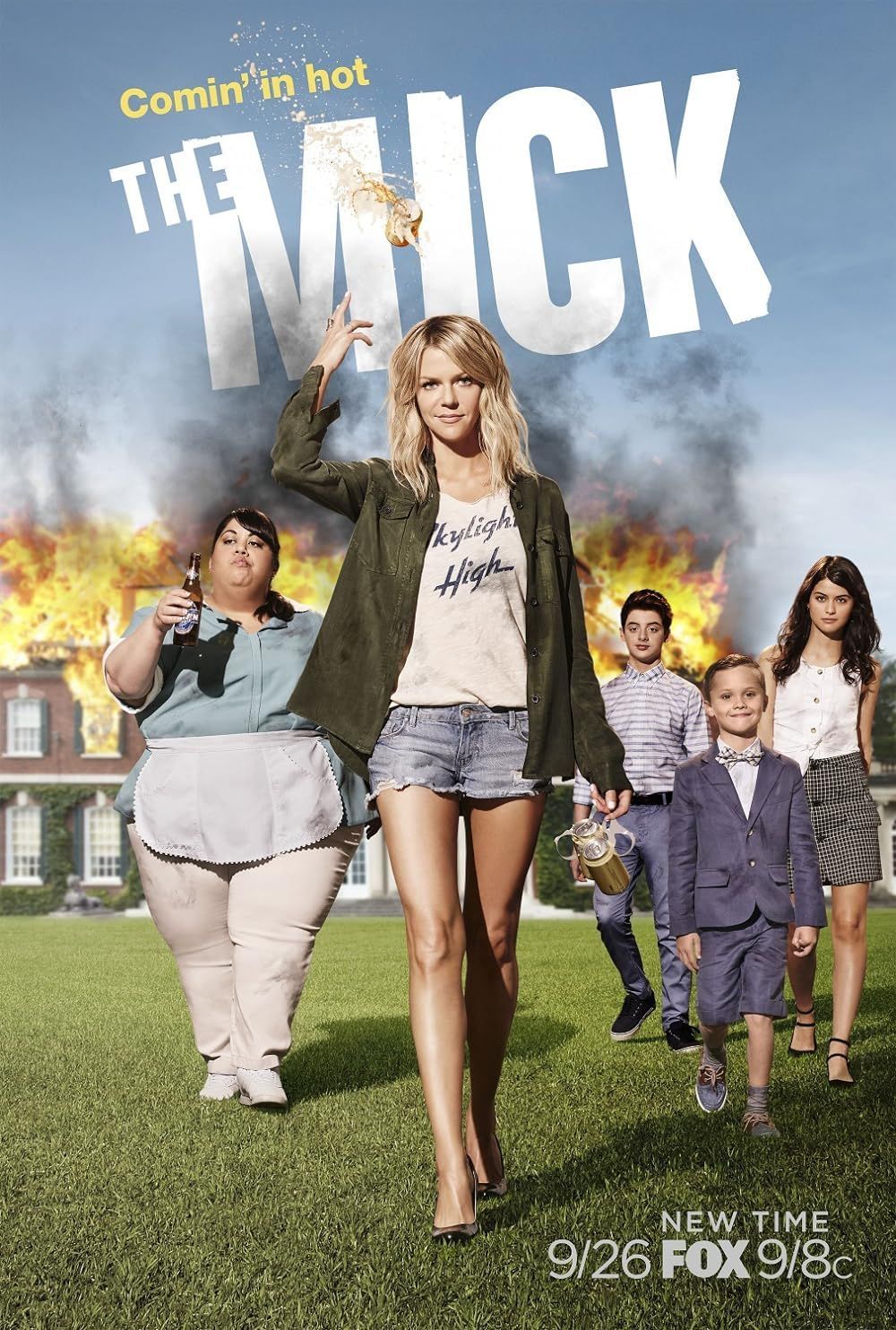
- Release Date
-
2017 – 2017
- Network
-
FOX
- Directors
-
Randall Einhorn, Matt Sohn, Eric Dean Seaton, Eva Longoria, Kat Coiro, Geeta Patel, Iain B. MacDonald
The Mick opens with a premise that sounds like a dare: a reckless grifter named Mickey, played by Kaitlin Olson at her feral best, is forced to raise her estranged sister’s three ultra-privileged kids after the parents are busted for fraud and flee the country. Olson, best known as Dee from It’s Always Sunny in Philadelphia, brings her trademark unhinged physical comedy and sociopathic timing, but what makes The Mick stand out is how deeply it leans into emotional instability without softening its edges. Sofia Black-D’Elia plays Sabrina, the ice queen teen who might secretly be the family’s most ruthless operator; Thomas Barbusca’s Chip is pure inflated ego in boat shoes; and Jack Stanton’s Ben, the youngest, is the show’s Trojan horse — all innocence on the outside, with the soul of a pyromaniac gremlin. It’s a comedy with the speed and bite of a feral raccoon fight, and Olson is the rabid MVP.
A Beautifully Broken Babysitter
If Malcolm in the Middle was about a family falling apart from the inside, The Mick is about trying to keep someone else’s already-doomed family duct-taped together. Both shows thrive in the chaos of mismatched parenting — Lois as the iron fist, Mickey as the middle finger. Mickey doesn’t try to fix the kids so much as corrupt them less than the world already has, and in that way she’s kindred to Malcolm’s accidental mentors. Like Malcolm, The Mick finds catharsis in dysfunction, and it understands that beneath every bratty tantrum and biting insult is a feral, desperate desire to be loved — or at least tolerated.
3
‘No Good Nick’ (2019)
Part heist caper, part family dramedy, No Good Nick is a Netflix sleeper that hides a lot of emotional weight under its Disney Channel surface. The show follows Nicole (Siena Agudong), a teenage con artist who infiltrates a suburban family under false pretenses, only to find herself torn between revenge and the genuine connection she starts to build. Sean Astin and Melissa Joan Hart play the clueless but well-meaning parents, and Kalama Epstein’s Jeremy — the neurotic overachiever with a blackmail binder — emerges as the Malcolm-esque linchpin. The show balances high-stakes deception with low-stakes sibling squabbles, and though it’s uneven at times, its tonal ambition is quietly radical: teen guilt, family dysfunction, and economic precarity, all wrapped in a format that looks like Full House at first glance.
Fraudulent Families, Real Feelings
Like Malcolm in the Middle, No Good Nick is built on a moral seesaw: its characters are constantly caught between who they are and who they’re pretending to be. Malcolm faked apathy, Nick fakes identity — but both are too smart for their own good, too aware of what’s broken around them, and too emotionally entangled to walk away clean. The show’s domestic messiness — high-achieving kids, well-intentioned but distracted parents, the occasional criminal plotline — mirrors Malcolm’s blueprint of family as both battleground and refuge. And like Malcolm, No Good Nick plays with genre from within, weaponizing sitcom form to tell a story about how pretending to care often turns into the real thing.
2
‘F Is for Family’ (2015)
Co-created by comedian Bill Burr and The Simpsons writer Michael Price, F Is for Family is a brutally honest animated sitcom about growing up in 1970s Rust Belt suburbia, where dreams have dead ends and dads chain-smoke in the kitchen while yelling about Vietnam. Burr voices Frank Murphy, a rage-fueled airport baggage handler whose emotional palette ranges from quiet resentment to full-blown, drywall-punching despair. Laura Dern’s Sue is the exhausted glue of the family, working through the slow burn of feminist awakening while selling plastic kitchenware. Justin Long voices Kevin, the rebel teen with big hair and a bigger need for validation, while Haley Reinhart’s Bill — the sensitive middle child — becomes the heart of the show. There’s nothing precious here; it’s loud, bleak, and deeply funny.
Middle Children, Middle Class, and Middle Fingers
Malcolm in the Middle and F Is for Family might differ in time period and format, but their DNA is uncannily aligned: both explore the emotional violence of being a smart kid in a world that doesn’t care. Malcolm intellectualizes his trauma, Bill absorbs it. Both shows depict families not as idealized units, but as flammable ecosystems — complete with neglect, misdirected affection, and screaming matches that double as therapy. F Is for Family expands Malcolm’s critique of the American dream into something even grimmer: what happens when the dream isn’t deferred, but bankrupt. Still, like Malcolm, it never loses sight of love — bitter, twisted, shout-it-through-the-wall love — the kind that only makes sense when you’re in the middle of it.

Related
I Just Found the Most Underrated Series on Netflix That You Need to Be Watching
‘Derry Girls’ is a comedy-drama set in the 1990s in Northern Ireland that accurately portrays the awkwardness of puberty.
1
‘Derry Girls’ (2018)
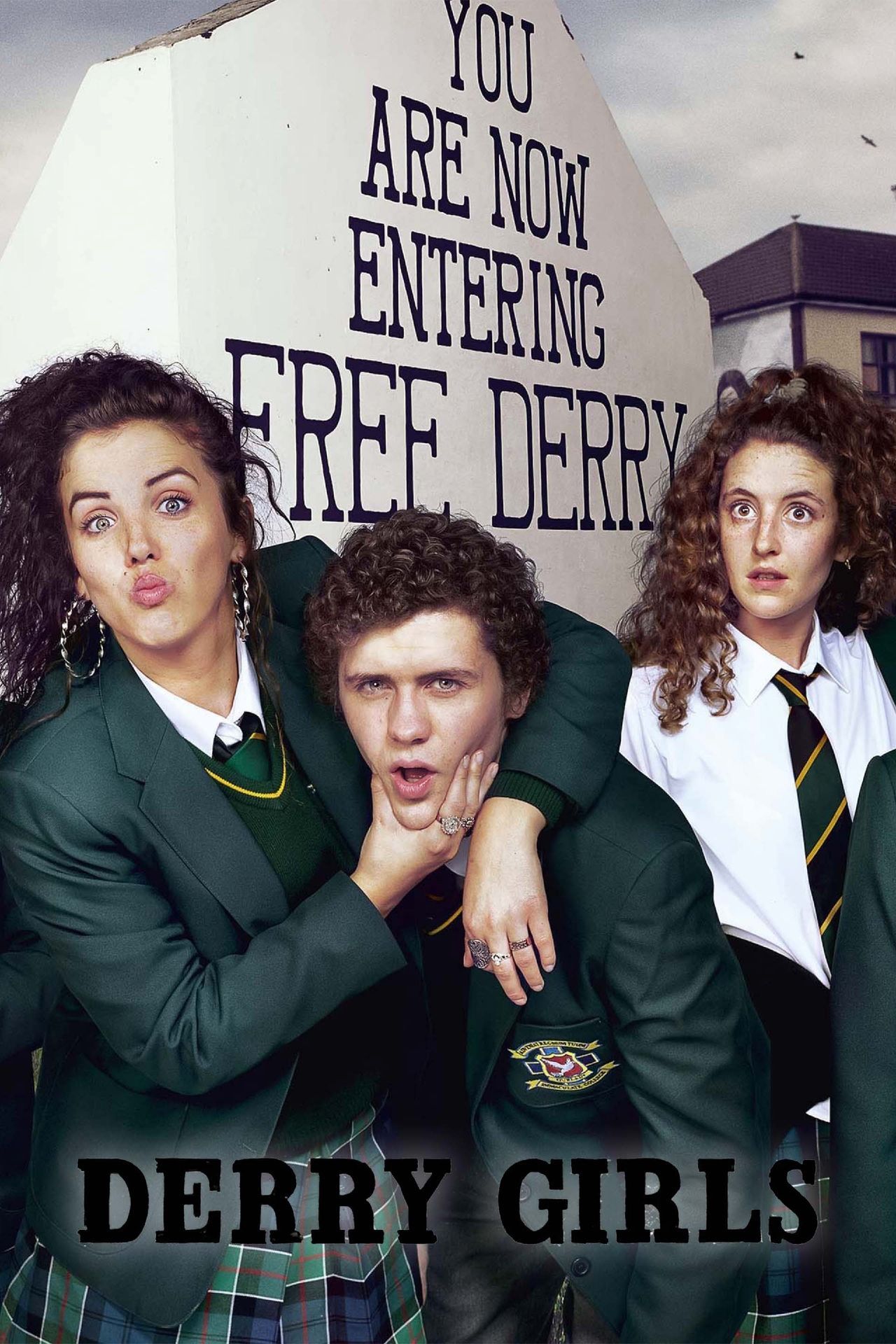
- Release Date
-
January 4, 2018
- Network
-
BBC
- Showrunner
-
Lisa McGee
- Directors
-
Lisa McGee
- Writers
-
Lisa McGee
Set in 1990s Northern Ireland during the waning days of The Troubles, Derry Girls is a miraculous tonal balancing act: a coming-of-age sitcom that marries geopolitical unrest with chaotic teen girl energy. Created by Lisa McGee and based on her own adolescence, the show centers on Erin (Saoirse-Monica Jackson), her neurotic cousin Orla (Louisa Harland), the tightly wound Clare (Nicola Coughlan, pre-Bridgerton), the irreverent Michelle (Jamie-Lee O’Donnell), and poor James (Dylan Llewellyn), the lone English boy often mistaken for a girl and endlessly punished for it. What makes the show great isn’t just its sharp writing or quotable lines — it’s the way it captures the emotional extremism of girlhood: every crush is a crisis, every rumor a revolution. And underneath the jokes is real grief, both personal and political, handled with disarming clarity.
History Class as a Food Fight
Like Malcolm in the Middle, Derry Girls understands that adolescence is a war zone — literal in this case — and that the best defense is to be funnier than the person trying to ruin your life. Erin and her friends are Malcolm’s spiritual sisters: intellectually overclocked, emotionally unfiltered, and constantly at odds with the absurdity of adult logic. Sister Michael, the school’s withering head nun, delivers lines with the same deadpan precision as Lois, and the family dinner scenes often blur the line between farce and therapy. But what truly links the two shows is tone — the ability to portray youth as both ridiculous and profound, where a detention slip feels as consequential as a ceasefire. Derry Girls makes the personal political and the political hysterical, without ever losing its heart — or its accent.
This story originally appeared on Movieweb




